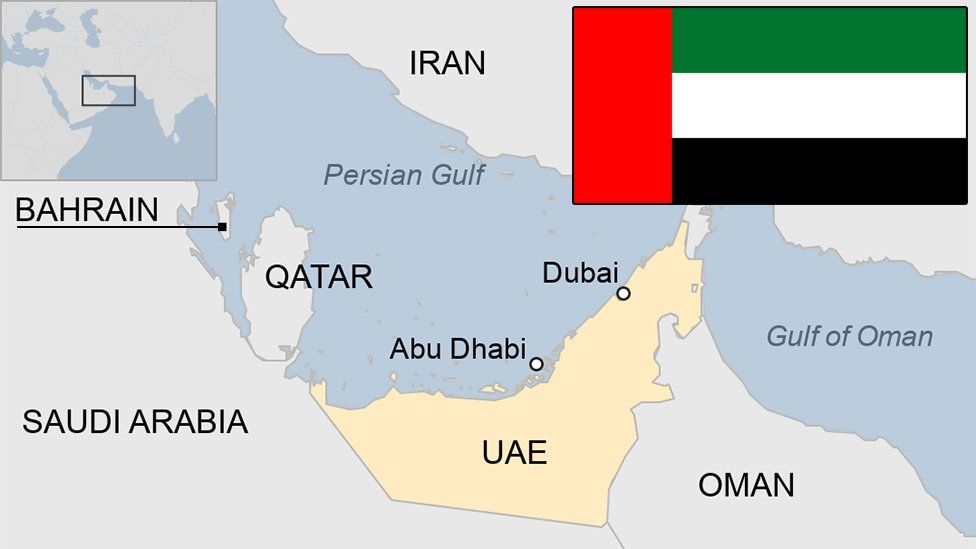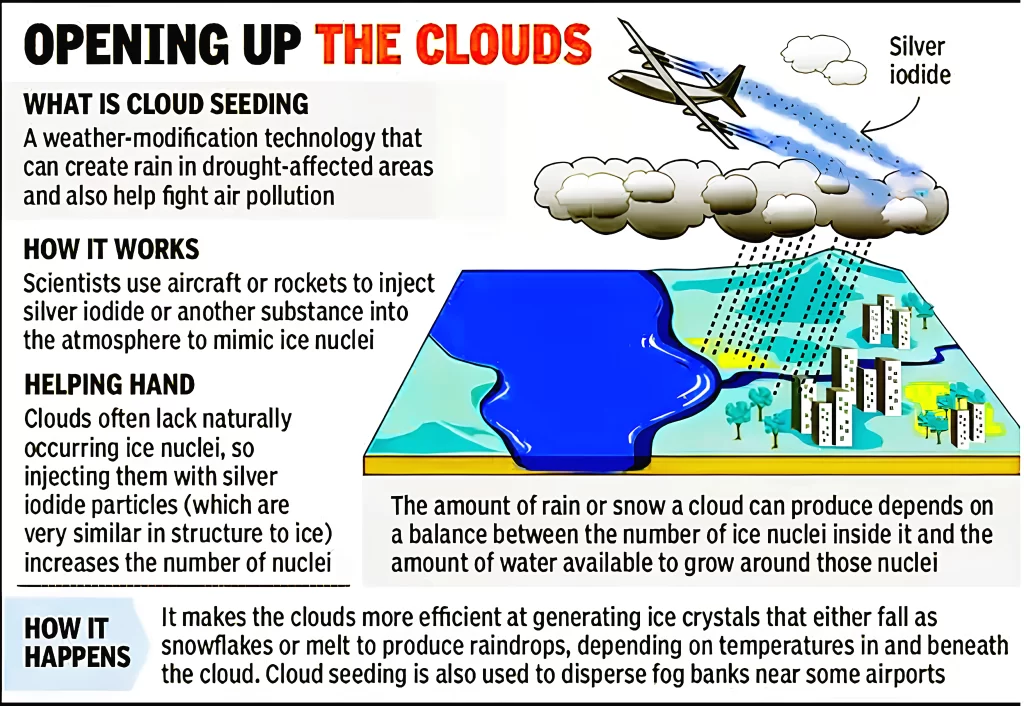Description

Copyright infringement not intended
Picture Courtesy: https://www.bbc.com/news/world-middle-east-14703998
Context: Dubai (UAE) witnessed unusually high rainfall following a strong thunderstorm, as opposed to its dry climate, where heavy rains are rare except during the colder winter months.
Details
- The heavy rainfall in Dubai, which led to unprecedented flooding and disruptions, was caused by a combination of factors related to a severe thunderstorm system passing through the Arabian Peninsula and the Gulf of Oman.
Thunderstorm System
- The intense rainfall was triggered by a storm system moving through the region, which brought significant moisture and atmospheric instability conducive to heavy precipitation.
Cloud Seeding
- Reports are suggesting that cloud seeding might have contributed to enhancing the rainfall. Cloud seeding involves spraying salt mixtures into clouds to induce condensation and precipitation. This process can amplify existing atmospheric conditions and potentially lead to heavier rainfall.

Climate Change
- Experts have raised the possibility that climate change could have influenced the severity of this weather event. Warmer global temperatures due to climate change lead to increased evaporation from oceans and water bodies, resulting in a warmer atmosphere that can hold more moisture.
- Studies indicate that for every 1 degree Celsius rise in average temperature, the atmosphere can hold about 7% more moisture. This increased moisture content can intensify storms and rainfall events, potentially leading to more extreme precipitation.
- The UAE has experienced a significant rise in temperatures, with an increase of almost 1.5 degrees Celsius over the past 60 years. This warming trend is largely attributed to the accumulation of greenhouse gases in the atmosphere from human activities like industrialization and fossil fuel combustion.
|
It is challenging to credit any specific weather event solely to climate change, as weather patterns are influenced by complex interactions of various factors, including natural climate variability (such as El Niño and La Niña). While climate change can contribute to the conditions that favour extreme weather events like heavy rainfall, definitive attribution requires detailed analysis considering multiple factors.
|
Conclusion
- The heavy rainfall in Dubai was primarily driven by a potent storm system over the Arabian Peninsula, possibly enhanced by cloud seeding, and potentially influenced by climate change-induced atmospheric changes. While climate change contributes to the overall context of more intense precipitation events globally, pinpointing direct causation for a specific event remains a complex scientific challenge.
Must Read Articles:
Anticyclone
Monsoon
Source:
Indian Express
|
PRACTICE QUESTION
Q. Consider the following statements in the context of the Cloud seeding:
1. Cloud seeding is a weather modification technique that involves dispersing substances into the atmosphere to enhance precipitation.
2. The substances used in cloud seeding can include silver iodide, potassium iodide, or dry ice.
3. Cloud seeding guarantees rainfall whenever it is applied to clouds.
4. The application of cloud seeding is regulated by international agreements to ensure its safe and ethical use.
How many of the above statements are correct?
A) Only one
B) Only two
C) Only three
D) All four
Answer: B
|












